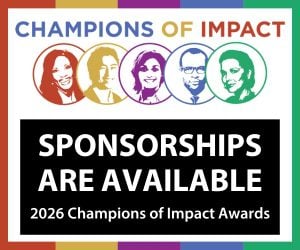Merriam-Webster defines it as “the process of renewal and rebuilding accompanying the influx of middle-class or affluent people into deteriorating areas that often displaces poorer residents.” Others, many of whom are adversely affected, refer to this social phenomenon as the “G-word” —suggesting the full syllabic uttering is a dirty word.
No matter what you call it, gentrification is a topic on the minds of many.
According to the Gentrification in America report, a collection of findings conducted by governing.com, nearly 20 percent of neighborhoods with lower incomes and home values have experienced gentrification since 2000, compared to only 9 percent during the 1990s. Some of the most common impacts include increased property taxes and economic disparity among citizens.
In Indianapolis, data shows that from 1990–2000, the share of eligible census tracts that were gentrifying was 3.3 percent. Since 2000, that number has risen to 12.2 percent.
This weekend, the Kheprw Institute, in partnership with Spirit and Place, will host the sixth session of an eight-part community conversation series titled “Gentrify: The Good, The Bad, The Ugly.”
“The convo on gentrification in Indy has unfortunately not been one that’s been open and public,” said Kheprw’s Executive Director Imhotep Adisa. “We have created this with the help of community, to have honest dialogue around sensitive important subjects.”
The event, which takes place on Aug. 28 from 3–5 p.m., will explore the topics of land, housing, real estate and global perspectives. Panelists include Elle Roberts (community engagement manager, House Life Project), Jackelyn Hwang (Princeton University Office of Population Research), Mike McKillip (executive director, Midtown Indianapolis Inc.) and Meredith Brickell (project leader, House Life Project).
Lashawnda Crowe Storm, of Spirit and Place, says the issues surrounding housing and equity nationwide in places like San Francisco, New York City and Portland are not far removed from the current state of affairs in the Circle City.
“Regardless of where you’re dealing with gentrification, they’re issues that are similar across the country; it’s just about what it looks like when it comes to your community,” she said. “I think we all know what it looks like in Indianapolis. It looks like having schools in certain neighborhoods that are being closed. We have situations where you may no longer have a community school, so that means kids who live there can’t go to school there. How does this impact a family that already has transportation issues? We also see some of the typical things like people being pushed out of neighborhoods because the cost of living has gone up.”
In terms of solutions, Storm and Adisa believe having open dialogue is the first step.
“I think ultimately you can’t come to alternative solutions if you don’t first have a discussion and explore what you feel like is happening around the topic,” said Adisa.
“The fact that we ignited this discussion and we are getting people from all areas of the city and cross sector is the beginning for us to start working toward what are viable solutions for Indy as our communities begin to change.”
Following the event on Aug. 28, Kheprw will hold two more sessions on Sept. 25 (Equitable Development vs. Economic Development) and Oct. 23 (Solutions). All events occur from 3–5 p.m. at Kheprw Institute located at 3549 Boulevard Place.
For more information, visit gentrify.kheprw.org.




